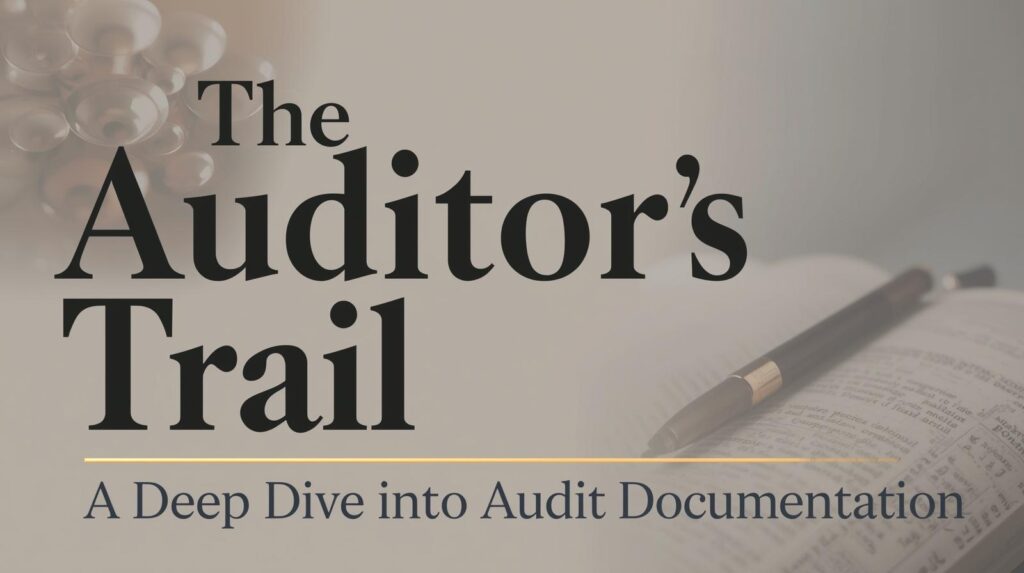The Engine Room of Business: Decoding the Core Functions of Financial Accounting
If a business is a vehicle, financial accounting is its sophisticated dashboard, engine management system, and historical logbook all rolled into one. It’s the systematic process that captures, analyzes, and presents a company’s financial story. But what does it actually *do*? Beyond just “crunching the numbers,” financial accounting performs a series of crucial functions that provide order, ensure accountability, and enable intelligent decision-making for a vast audience of stakeholders.
For anyone operating in the U.S. business landscape, a clear grasp of these functions is essential. They are the mechanics that drive compliance with standards like GAAP (Generally Accepted Accounting Principles) and provide the reliable data that underpins our market economy. This deep dive will illuminate the indispensable functions of financial accounting, showing how they work together to create a transparent and trustworthy business environment.
Key Functions at a Glance
- Recording Transactions: Systematically documenting all financial activities of a business.
- Classifying and Summarizing: Grouping similar transactions and presenting them in a condensed, understandable format.
- Reporting and Communicating: Preparing and distributing financial statements to external users like investors and creditors.
- Analysis and Interpretation: Evaluating financial data to extract meaningful insights about performance and health.
- Ensuring Legal Compliance: Adhering to financial regulations and tax laws set by bodies like the SEC and IRS.
- Safeguarding Assets: Implementing controls to protect company resources from fraud, error, and waste.
The Foundational Function: Systematic Recording of Transactions
The absolute bedrock of financial accounting is the **systematic recording of every financial transaction**. A transaction is any event that has a monetary impact on the financial position of a business. This could be anything from a multi-million dollar property acquisition to the purchase of a $5 box of paper clips.
The Process: Bookkeeping and the General Journal
This function is often called bookkeeping. Using the principles of double-entry accounting, each transaction is recorded in a chronological log known as the **general journal**. The double-entry system dictates that every transaction affects at least two accounts, with one account being debited and another credited, ensuring the accounting equation ($Assets = Liabilities + Equity$) always remains in balance. For example, when a company buys inventory for cash:
- The ‘Inventory’ account (an asset) increases.
- The ‘Cash’ account (also an asset) decreases.
This meticulous record-keeping is the source of all financial data. Without this first, crucial function, none of the others are possible. It ensures that no transaction is overlooked and provides a complete audit trail.
Record
Classify
Summarize
Report
The Organizational Function: Classifying and Summarizing Data
A raw journal of thousands of transactions is just noise. To turn this raw data into useful information, financial accounting performs the critical function of **classifying and summarizing**.
The Process: The General Ledger and Trial Balance
Classification involves grouping all transactions from the journal into their respective accounts in the **general ledger**. The ledger contains a separate page for each account type (e.g., Cash, Accounts Receivable, Sales Revenue, Rent Expense). This allows a company to see the total activity and final balance for each specific account.
After classifying, the data is **summarized**. The primary tool for this is the **trial balance**. A trial balance is a report that lists all the accounts from the general ledger and their final debit or credit balances. Its main purpose is to verify that the total of all debit balances equals the total of all credit balances. This internal check ensures the mathematical accuracy of the ledger before the official financial statements are prepared. It condenses an entire period’s worth of transactions into a single, manageable worksheet.
The Core Output Function: Reporting and Communication
This is arguably the most visible function of financial accounting. Its purpose is to **communicate the summarized financial information to external stakeholders**. The primary medium for this communication is a set of formal reports known as the **financial statements**.
The main statements, as mandated by GAAP, are:
- The Income Statement: Reports on the company’s financial performance (profit or loss) over a period.
- The Balance Sheet: Presents the company’s financial position (assets, liabilities, equity) at a specific point in time.
- The Statement of Cash Flows: Shows how cash was generated and used across operating, investing, and financing activities.
- The Statement of Stockholders’ Equity: Details the changes in the ownership accounts over a period.
This reporting function is essential for transparency. It allows investors to assess the company’s value, creditors to evaluate its risk, and the public to hold it accountable. The reports are designed to be standardized and comparable, allowing users to analyze trends over time and benchmark against competitors.
The Value-Add Function: Analysis and Interpretation
Preparing the statements isn’t the end of the road. A crucial higher-level function is the **analysis and interpretation of the financial data**. This function transforms the numbers into strategic insights. Financial accountants and analysts use various techniques to dissect the statements and understand the story they tell.
Common Techniques:
- Ratio Analysis: Calculating key financial ratios to assess different aspects of performance. Examples include the Current Ratio (for liquidity), Debt-to-Equity Ratio (for leverage), and Return on Equity (for profitability).
- Trend Analysis: Comparing financial data over multiple periods to identify patterns, growth rates, and potential problem areas. Is revenue consistently growing? Are costs spiraling out of control?
- Comparative Analysis: Benchmarking the company’s financial performance against industry averages and direct competitors to gauge its market position.
This interpretive function helps management make better strategic decisions, such as identifying areas for cost-cutting, evaluating the profitability of new projects, and setting future performance targets. For investors, it’s the key to making an informed valuation of the company.
The Protective Function: Safeguarding Business Assets
An often-overlooked but vital function of financial accounting is to help **safeguard the assets of the business**. This is achieved through the implementation of a robust system of **internal controls**.
Internal controls are the policies and procedures put in place to:
- Prevent Fraud: Segregating duties (e.g., the person who approves payments is not the person who signs the checks) makes it harder for employees to misappropriate assets.
- Ensure Accuracy: Requiring reconciliations (e.g., comparing the company’s cash balance to the bank statement) helps catch errors.
- Promote Efficiency: Establishing clear procedures for authorizing transactions prevents waste and unauthorized use of company resources.
A well-designed accounting system with strong internal controls acts as a guardian of the company’s financial resources, protecting them from theft, error, and mismanagement. This function builds trust with investors and lenders, as it demonstrates that their capital is being managed responsibly.
The Mandatory Function: Ensuring Legal and Tax Compliance
Finally, financial accounting serves the critical function of **ensuring the business complies with a multitude of legal and regulatory requirements**. Businesses do not operate in a vacuum; they are subject to laws at the federal, state, and local levels.
Key Regulatory Bodies in the U.S.:
- Securities and Exchange Commission (SEC): Publicly traded companies are required to file regular financial reports (like the Form 10-K and 10-Q) with the SEC. Financial accounting ensures these reports are prepared in accordance with GAAP.
- Internal Revenue Service (IRS): The accounting system must be ableto provide the necessary information to file accurate income tax returns and compute the correct tax liability. While tax accounting rules can differ from GAAP, financial accounting data is the starting point.
- Other Bodies: Depending on the industry, companies may have to report to other agencies, and the accounting system must be able to capture the data needed for this compliance.
This function protects the business from legal penalties, fines, and reputational damage. It is a mandatory aspect of being a responsible corporate citizen.
Frequently Asked Questions (FAQ)
What’s the difference between financial accounting and managerial accounting?
The primary difference lies in the audience and purpose. Financial accounting creates reports for external users (investors, creditors, regulators) and must strictly follow external rules like GAAP. Its focus is on historical accuracy and reliability. Managerial accounting creates reports for internal users (managers) to aid in planning, controlling, and decision-making. It is future-oriented and does not need to follow GAAP.
Is bookkeeping the same as accounting?
No. Bookkeeping is a subset of accounting. Bookkeeping is the mechanical process of recording daily transactions—it’s the “recording” function. Accounting is a much broader process that includes bookkeeping but also involves classifying, summarizing, analyzing, interpreting, and reporting the financial data. An accountant designs the system, interprets the data, and prepares the statements, while a bookkeeper primarily maintains the records within that system.
Why is double-entry accounting so important?
The double-entry system is the cornerstone of modern accounting because it provides a self-regulating, error-checking mechanism. By requiring every transaction to have an equal debit and credit, it ensures the accounting equation always stays in balance. This dramatically reduces the number of errors and makes it much harder to hide fraudulent transactions, thereby increasing the reliability of the financial statements.
How has technology changed the functions of financial accounting?
Technology (like accounting software and AI) has largely automated the most tedious functions, such as recording and classifying transactions. This has shifted the accountant’s role away from manual data entry towards more value-added functions like analysis, interpretation, and strategic advisory. Technology has made the process faster, more accurate, and capable of handling vast amounts of data, enabling real-time financial insights.

